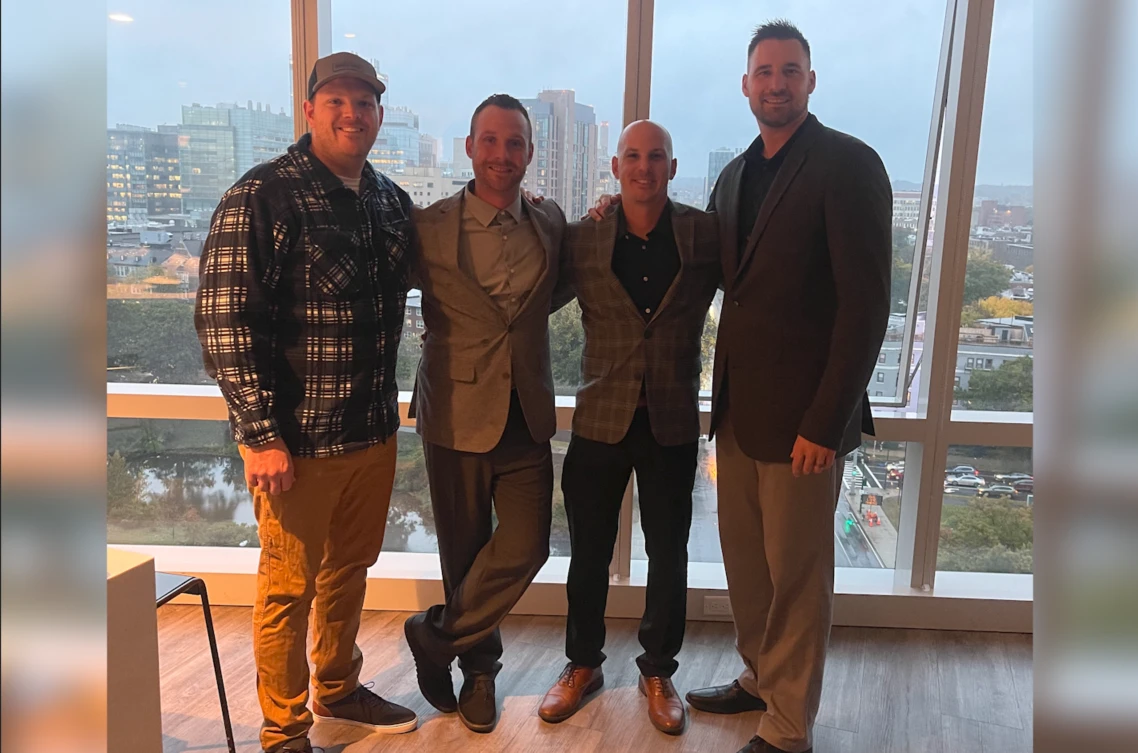Many Florida pest control licensees inspect homes or other structures for wood-destroying organisms ("WDOs") as part of their regular business activities. Such inspections are performed by WDO identification cardholders or certified operators with the WDO category. These inspectors receive special training to qualify them to identify various WDOs. The typically reported WDOs during an inspection are subterranean and drywood termites.
However, Section 482.021(28) of the Florida Structural Pest Control Act defines wood-destroying organisms to include "plant life which damages and can re-infest seasoned wood in a structure, [including] wood-decaying fungi." Florida Statute 482.226(1) requires a WDO inspection report to include an inspection for "all wood-destroying organisms," including such wood-decaying fungi.
MOLD LITIGATION. Mold is a type of fungi. During the past few years, Florida has experienced an alarming increase in the number of lawsuits over the presence of mold in residential dwellings. These lawsuits are commonly brought by a homeowner against the party who sold them the property, the original homebuilder and the pest control inspector who failed to detect the presence of mold during a WDO inspection incident to the home sale.
Such lawsuits uniformly allege that residents of the home ingested or inhaled mycotoxins, a byproduct of some "toxigenic molds," resulting in illnesses such as chronic fatigue, brain damage, asthma, breathing difficulties and immune system problems. In addition to these purported health effects, the lawsuits commonly demand reimbursement of the immense costs necessary to remove the toxigenic mold from the structure.
As a result of this dramatic increase in costly mold litigation, some national home-owners’ insurance companies have stopped issuing policies in Florida. It is noteworthy that despite the trendiness of this "toxic mold litigation" among plaintiffs’ lawyers, less than 50 of the 17,000 known molds actually produce toxins. Even with such toxigenic molds, there is no reliable medical evidence confirming that the mycotoxins produced truly cause the health effects claimed by the homeowners. To date, Stachybotrys chartarum — the mold most frequently portrayed in lawsuits as the source of toxic exposure illness — has never been scientifically proven to have such poisonous effects.
The problem for Florida WDO inspectors is that the training they receive does not qualify them to identify the presence or significance of the "toxigenic molds" on which these lawsuits are based. Many argue that considering the current lack of scientific knowledge about the dangers of molds, additional mold training for WDO inspectors would do little good. In fact, the U.S. Environmental Protection Agency advises that there are no federal, state or municipal standards establishing safe mold exposure levels. The recognized experts in the field of toxigenic mold — industrial hygienists — operate unregulated in Florida, creating their own training in detecting and remediating mold problems with no governmental oversight.
A number of pest control licensees have responded to concerns about toxic mold litigation by adding disclaimers to the state-mandated WDO inspection report form required for documenting inspection results. Typically, such attempted disclaimers state that the WDO inspector is providing no opinion on the presence or significance of molds when performing the inspection. However, pest control regulations in Chapter 5E-14.142(2)(c) of the Florida Administrative Code plainly forbid the placement of any such disclaimers on WDO inspection reports.
The Florida Department of Agriculture and Consumer Services has recognized that lawsuits against WDO inspectors are claiming the Structural Pest Control Act requires the identification and reporting of molds during WDO inspections; tasks consistently viewed as beyond the expertise of inspectors. Considering mold disclaimers are currently prohibited on WDO inspection reports, the result is a worrisome exposure of the inspector to lawsuits for the failure to identify and disclose the presence of toxigenic mold. In response, the department is studying a draft proposal that would narrow the definition of "wood-decaying fungi" under the Structural Pest Control Act to exclude the claimed toxigenic molds.
WHAT’S THE REAL STORY? Many experts agree with this approach. The Department of Agriculture and Consumer Services received statements provided by plant pathology specialists who advised that the fungi which cause wood decay are of a different taxonomic group than toxigenic molds. These experts believe that unlike wood-decaying fungi, toxigenic molds lack the enzymes necessary to decompose lignin, an important component of wood. Accordingly, toxigenic molds do not appear to be wood-destroying organisms because they simply cannot cause a loss of strength and decomposition of wood. Should the legislature explicitly remove toxigenic molds from the definition of wood-destroying organisms in the statute, it will clearly signal that WDO inspectors are not obligated by Florida statutes to identify or disclose the presence of mold in a typical WDO inspection report.
Experts for plaintiffs believe otherwise. They cite a U.S. Environmental Protection Agency report that found that while molds may not appreciably reduce wood strength, they can increase the capacity of wood to absorb moisture, thus increasing the potential for an attack by other WDOs such as wood-decaying fungi and subterranean termites. Plaintiffs’ lawyers can use such opinions to argue that a WDO inspector who fails to disclose the presence of toxigenic mold is still liable even though mold might not technically be a WDO. Such lawyers assert that there is an industry custom obligating WDO inspectors to search for and disclose the presence of mold because it is a "conducive condition" that makes the structure susceptible to attack by other WDOs.
However, under the Structural Pest Control Act, there is no statutory requirement for a WDO inspector to report "conducive conditions." In light of this, WDO inspectors should carefully consider the profound risks of voluntarily reporting on a WDO inspection report the presence of any type of conditions conducive to wood-destroying insects or wood-decaying fungi. By voluntarily reporting a conducive condition, such as excessive moisture, for example, the WDO inspector exposes him or herself to liability should it later be learned the structure also suffered a toxigenic mold infection unidentified by the inspector. Like excessive moisture, mold is arguably another conducive condition and the inspector will be hard pressed to defend his decision to assume the duty of warning about one conducive condition while not likewise warning about another.
FINAL THOUGHTS. Many are concerned that these developments result in WDO inspectors "turning a blind eye" to the presence of conducive conditions in their execution of wood-destroying organism inspection reports. While such conduct is permissible under the Structural Pest Control Act, it possibly undermines the very purpose of the statute: to provide critical information about pest control issues to the untrained consumer contemplating a decision of whether to purchase the property at issue.
The Department of Agriculture and Consumer Services is also considering a solution that might encourage WDO inspectors to feel safe in reporting conducive conditions without exposing them to liability for the failure to locate and disclose toxigenic mold. Currently being considered by the Department is an amendment to Chapter 5E of the Florida Administrative Code that would allow a pest control licensee to place a disclaimer on the WDO inspection report. This limited disclaimer would permit the WDO inspector to state that he or she "is providing no opinion on health affects or indoor air quality associated with the presence of any form of fungi."
Until such time as this disclaimer is permitted however, the pest control licensee should consider whether it might be appropriate to take advantage of the technicality in the Florida Administrative Code that allows the WDO inspection report to be supplemented by additional information.
To possibly enhance the protection of the pest control licensee from toxic mold litigation associated with a WDO inspection, a supplementation could warn the consumer that the inspector is not authorized or licensed to inspect for toxigenic mold and simultaneously provide added information on how to contact an industrial hygienist.
The author is a former U.S. Army prosecutor and currently a senior associate attorney at the Tampa, Fla., office of Rumberger, Kirk & Caldwell, P.A., which through its pest control defense section has handled the defense of termite and pest control companies in Florida and Alabama. He can be reached via e-mail at bbaggot@pctonline.com.
WANT MORE?
Enter your email to receive our newsletters.

Explore the September 2003 Issue
Check out more from this issue and find your next story to read.
Latest from Pest Control Technology
- Petti Pest Control Owners Reflect on Finding Success as a Father-Son Duo
- Mosquito Control: Spraying vs. IPM
- Terminix Service's Leaders Inducted into South Carolina Business Hall of Fame
- Richard Christner on Colorado's State Preemption Roll Back Affecting Business Growth
- How to Get Rid of Odorous House Ants
- Massey Services Promotes Herndon to Director of Sales for Multi-Family Division
- NPMA Announces First Recipients of NPMA PRO Certified Credential
- Pestmaster of the Hudson Valley Acquires Catskill Animal Damage Control





